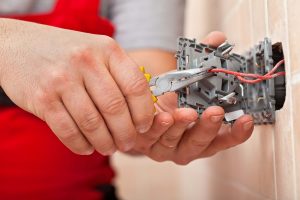 For your home wiring system, there is such a thing as pre-wiring or wiring for the future. This simply means applying pre-wiring tips that may become vital in the future for adding categories like audio, video, home security, network & Wifi, cable, satellite, and internet.
For your home wiring system, there is such a thing as pre-wiring or wiring for the future. This simply means applying pre-wiring tips that may become vital in the future for adding categories like audio, video, home security, network & Wifi, cable, satellite, and internet.
In many cases, homeowners who install home wiring themselves or the technicians they hire neglect pre-wiring for the future and this can cause difficulty later on. Pre-wiring is important to do the heavy lifting in your home whenever you need it.
Here are some tips on how to hire a house for the future. If you won’t be carrying out the project, these tips let you know what to look out for with your electrical contractor.
- Cover any exposed wiring
In wiring a house, most professional technicians aim to make the system smooth and neat. If you are lucky enough to have this professional approach, that’s great. But with or without this, you can take an extra step to cover any exposed wiring in your home wiring system. Wrap the wiring in plastic bags and hold them firm with a tape. This protects your wiring as other contractors work around the home.
- Use low voltage boxes when you can
Although high voltage boxes seem more popular, low voltage boxes are ideal for installing volume controls or when you need to run HDMI cables. They are a more convenient option and suitable for AV wall plates. You should install them where possible.
- Install a speaker wire
Good sound is a thing of excitement for homeowners. Audio or speaker systems can be installed in the future easily and affordably by running 4-conductor speaker wire. A 4-conductor wire differs from a 2-conductor wire as it has four separate wires that give you room for up to two speakers. Besides running this wire for whole-house speaker systems, you can keep volume controls in mind too.
- Have backup
For modern home theaters, HDMI is the standard connection often used. However, some not so pleasant experiences can show you that it’s always best to have a backup. An HDMI house wiring for the future can come up with issues like not working and that just defeats the whole aim of pre-wiring. The solution is to run two CAT6 cables along with the HDMI cables as a backup for future use.
- Install conduits
Cable conduits are not the same as electrical conduits and they often come in handy for running speaker wires, network cables, and cable wires. Install conduits during construction and terminate them into junction boxes. Cover them with faceplates and that’s the end of that until they are needed.
How about going wireless?
There’s nothing wrong with a plan to go wireless in the future. While this is great, wired connections are often faster and suitable for high-traffic applications. To ensure you can enjoy the speed of wired connections and use of applications like Ultra HD use wired connections such as CAT6 or Category 5e for your future proof home wiring.




